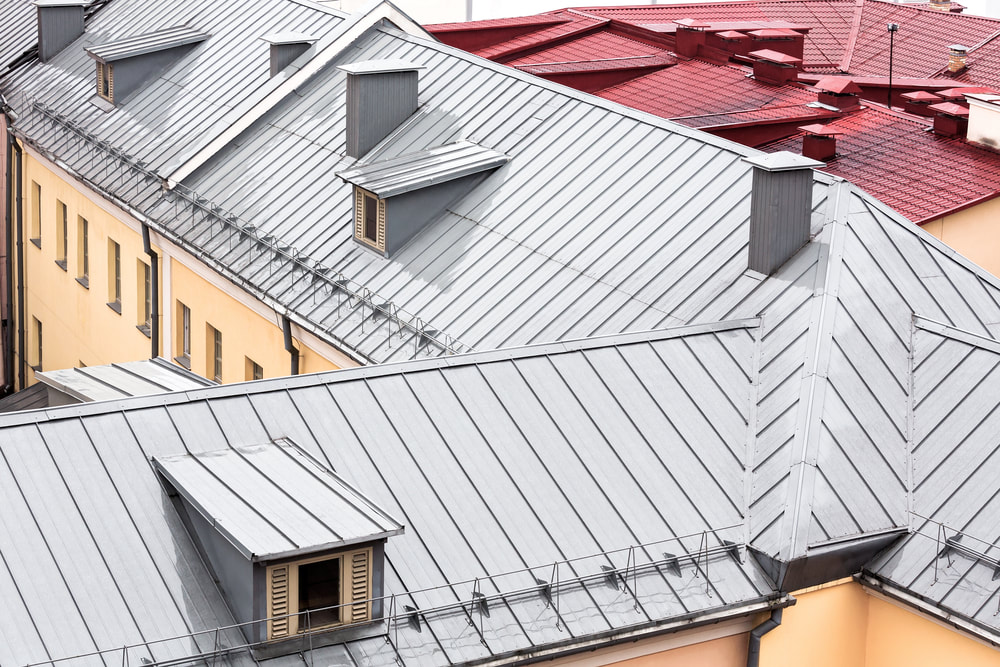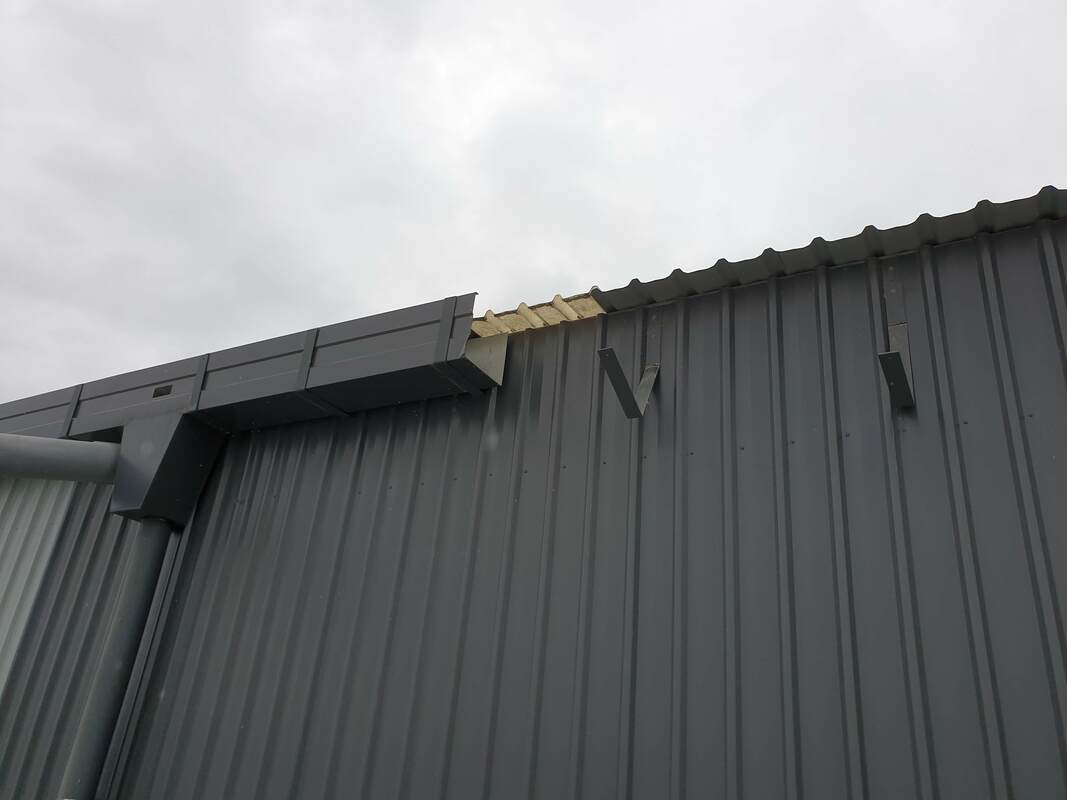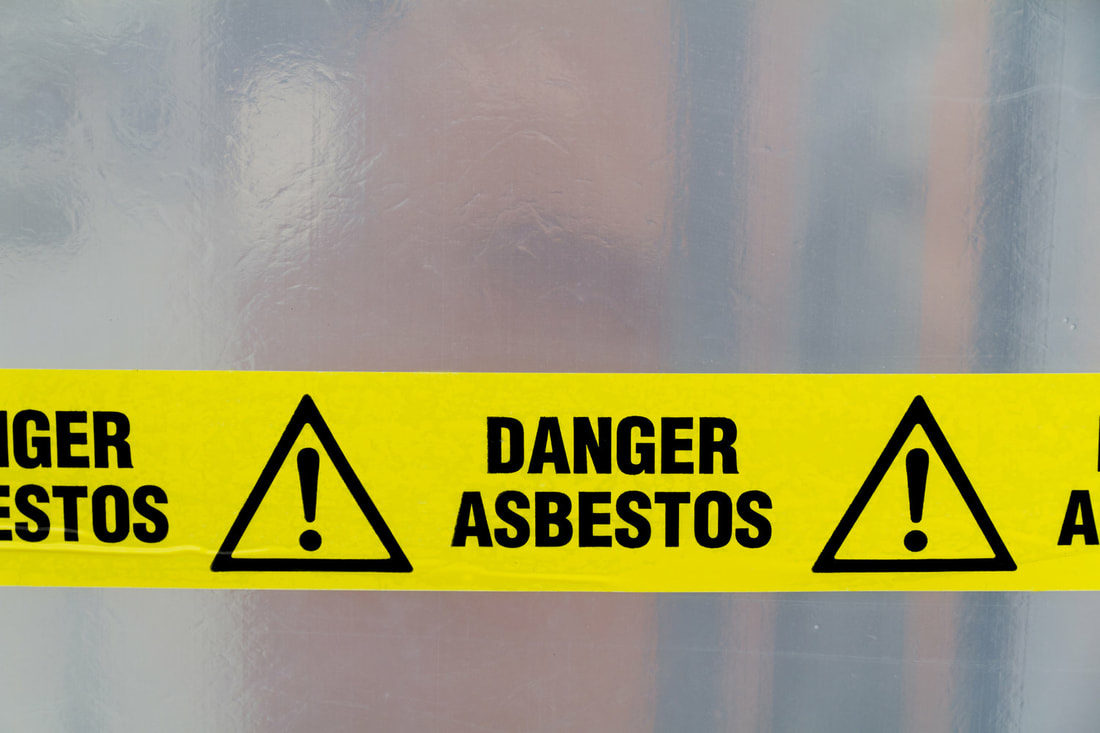|
7 Comments
In this day and age it is both timely and necessary that everybody is aware of the environmental impact of the materials they use and surround themselves with. Naturally, this extends to roofing and interestingly the type of roof a structure has can play a significant role in determining how environmentally friendly that building is due to factors like energy efficiency and the greenhouse effect. In this article we will briefly explain and discuss some of these key points.
Solar Panels If you are considering building a new roof or replacing an existing one, definitely consider having solar panels installed to reduce the environmental impact of the building. Producing your own electricity means you depend less on polluting fossil fuels. The Greenhouse Effect The Greenhouse Effect describes what happens when radiation from the sun becomes trapped in the Earth’s atmosphere. We are taught to think about this from the perspective of gases in the atmosphere that trap radiation but the effect is more nuanced than that. The Greenhouse Effect can also be used to describe how much solar radiation is absorbed or reflected by your roof. If it is absorbed it will cause the house to warm, which has the added impact of potentially requiring more cooling, demanding more energy usage. Reflecting solar radiation back into space is therefore not only good for the planet but also good for your property and your electricity bill. Traditionally, this approach would imply that a white roof is a better choice than a black one, and there is some truth to this idea but the reality is that solar radiation covers a much broader spectrum than just visible light. Thankfully, to make the task of reflecting solar radiation easy, some very clever scientists have invented roof coatings that are designed specifically to reflect a broad range of solar radiation. These coatings come standard with modern metal roofing although they can also be applied to almost any roofing material and are a very smart investment. Recyclability When roofs made of stone, terracotta or asphalt degrade there is little chance of recycling that material back into roofing material. Metal, on the other hand, is almost infinitely recyclable under the right conditions. Given enough time, however, every roof will need to be replaced so the question of what happens to that material afterwards and where it came from is worth considering. Living Roofs If you fancy yourself a complete devotee to the environmentally conscious movement, you should consider the possibility of a living roof. This could mean living partially underground in a home fit for a hobbit or actually growing a garden on your roof. Beware though, most existing houses and roofs are not designed to handle the extra weight or stress of having a garden retrofitted and therefore this idea should only be considered in close communication with an architect. Contact Ideal Roofing for Expert Advice on Roofing Environmentally conscious innovators are constantly redefining the market of what is possible in roofing and Ideal Roofing is one roofing company in Sydney that is staying on top of the ball. We are excited by innovation and keen to implement it so if you want to make your roof an environmentally friendly one we are keen to help. Call us today for a free quote on (02) 9525 2066 or contact us online. Deciding on your ideal roof might seem like a challenge. It is a big investment and it will be strikingly visible to the outside world. It’s easy to spend a lot of time debating fittings, cupboard handles and sink design but choosing the right roof is often a decision that gets left to the last minute. In this article we will discuss some key considerations for getting the perfect roof for your house.
Colour In some respects, colour is a topic that is quite individual. It will depend upon the colour of your walls, your neighbourhood and how much you want your house to stand out, both from the street and from the air. Despite that, some colour choices are definitely more environmentally friendly than others. A white roof will reflect more solar radiation back into the atmosphere and space than a black roof. This also means a white roof will heat up in the sun more slowly, and this is important for Sydney where it can get quite hot as a hot roof means the air conditioner will probably be running more in summer and that is going to cost you money. MATERIAL There are plenty of different materials you could employ to build a roof, but for the sake of this article we will only discuss three of the most common. If you are interested in other options talk to a roofing specialist. SLATE Slate is a popular choice for roofing because it can last a very long time and is resistant to rot and mould. The main drawbacks of slate roofing are that it requires extra framing to support the extra weight and can be quite expensive. Asphalt Asphalt shingles are the cheapest and most common roofing tile choice. They are relatively lightweight, come in a great variety of colours and are easy to install. However, due to their weight they are also liable to blow off in windy conditions. Metal Metal is extremely lightweight, recyclable and highly reliable. They are fire-safe, durable and require significantly less maintenance than roofs with tiles. They also have an extremely long life span and can be coated in a range of environmentally friendly radiation reflective coatings. Durability The lifespan of your roof is directly related to two key factors. Professional workmanship and choice of material. If your roof is installed by an amateur it probably won’t last as long as the material should. Metal, cedar and slate roofs should last in excess of 50 years. Asphalt tiles might be cheaper but can only be expected to last in the vicinity of half of that time, so consider that you will be purchasing another one in the lifetime of the building. Major weather events and falling objects can naturally significantly affect the lifespan of your roof. If you are worried about overhanging branches, contact an arborist. Professional Installation is Key Once you have decided on the perfect roof for your home it is imperative to have it installed by a roofing professional. It is the only way to ensure safety and durability because roofing is very much a trade where you don’t know what you don’t know. Poor installation can damage materials, and greatly increases the risk of the roof failing and letting water into your home. Additionally, choose a quality company that has a wide range of experience across the roofing sector. A company that installs commercial, industrial and domestic roofing products is good, and a company that also maintains and repairs all roofs is better. Contact Ideal Roofing to get your Ideal Roof Today If you would like an expert roof consultation from one of Sydney’s biggest roofing companies, look no further than Ideal Roofing. Not only can we build and install the finest metal roofs, but we also service, maintain and repair them to the highest standard. Contact us today and we will set up an appointment right away. Call us on (02) 9525 2066 or use our online form. Roofs only have a limited lifespan. Even the best roof will only last a hundred years, and humans have been building houses for thousands so it is inevitable that roofs will need to be replaced eventually. It can be a considerably costly endeavour but choosing to do it at the right time, rather than paying for repair after repair, can save you money in the long run. In this article we will discuss some key points to consider when deciding on whether to replace or repair your roof. If you are in doubt, it is always better to have an inspection performed by a qualified roofing specialist.
When to Repair Your Roof Every roof install should come with a warranty and an expected lifespan. If you are still within your warranty when you notice a problem with the roof, a repair should definitely be the first point of call. Most warranties will expire before the roof itself does, so if the roof is still in pretty good condition, get it repaired. Spot damage, caused by mould or rot is not a cause to have your whole roof replaced. Similarly, chance encounters with falling objects like tree branches should not lead you to replace your roof unless the damage is so substantial a repair is basically a rebuild anyway. Chances are good that the serviceman you employ to repair your roof will be able to provide a roofing inspection at the same time. Given that roofing troubles have a tendency to start small and get worse, even if you aren’t aware of a problem that needs repairing employing a quality roofer to perform an inspection is not a bad idea. When to Replace Your Roof A roof should be replaced when repairs are going to cost more or be required too frequently. If it feels like you are calling someone in to repair your roof every other week then it is time to get a new one. Curled or cracked shingles are a good sign your roof needs to be replaced. As is a steady build-up of roofing materials in your gutters several years after their installation. SAGGING ROOF If your entire roof is sagging it is an extremely bad sign. This points to structural problems and this should be addressed immediately. The Advantage of a Metal Roof Replacement Replacing your roof with a metal roof can be a very wise decision because it can be mounted on top of your existing roof. It might sound strange, but it means that the existing thermal insulation properties of your heavier tiled roof can be preserved and less waste is generated. Contact Ideal Roofing for a FREE consultation now. Ideal Roofing are experts in the roofing industry with more than 40 years of experience across the commercial, industrial and residential sectors. We offer a full range of roofing services including consulting, installation, maintenance, service and repair. Crucially we are trained and accredited in removal of fibre concrete or asbestos laden roofing in a safe manner. Call us on (02) 9525 2066 or use our online form to book your appointment. Is It Time to Repair or Replace My Roof?
Like all man made structures, roofing only has a limited lifespan. No matter how durable your roof is, it will eventually need to be repaired, upgraded or completely replaced. Understanding and recognizing the obvious signs that your roof has reached this point will ensure that your home or business stays safe in case of an unexpected emergency. At Ideal Roofing, we are passionate about informing everyday Australians about the ins and outs of our industry; domestic and commercial roofing. Read through our latest post to learn about the signs of roof deterioration and how to best respond to it. Signs of Roof Deterioration WATER LEAKS One of the most obvious signs of roofing deterioration is multiple leaks throughout your property. Look for yellowish stains and peeling paint on the top floors of your home or business to easily spot any leaks. Also inspect door and window frames for any stains that could indicate recent water damage. SHINGLE DETERIORATION Curled shingles are a sure sign that they have started to shrink and become severely weakened. After curling, it is only a matter of time until they become complete detached from your roof, leaving your property susceptible to water entry and subsequent damage. If you’ve noticed that your shingles are starting to curl, it is imperative that you act soon to fight off future problems. MOSS GROWTH Moss growth may give your roof a quaint, rustic look, but this seemingly innocuous growth can lead to major roofing problems. Widespread moss growth can damage your shingles and open your property up to potential water damage. Questions to Ask Yourself After noticing numerous signs of a damaged roof, you must decide whether to settle for roof repairs or to install an entirely new roof. Here are 3 pertinent questions which should be considered. HOW BIG OF AN AREA NEEDS REPLACEMENT? Minor roof damage over a small surface area should be easily repairable at a low cost. However, widespread damage or multiple damaged areas should be treated differently. Having various different water leaks throughout your roof is a sure sign that your roof is past its used-by date and should be completely overhauled. HOW OLD IS MY ROOF? The lifespan of your roof will vary depending on the material used and the area you live in, from 10 up to 60 or more years. Consider how long your roof has been standing for, the materials that were used, and the era in which it was built in. If the decades are starting to pile up, it may be time to completely replace the roof over your head. WHAT’S THE ADDITIONAL COST TO REPLACE THE ENTIRE ROOF? It is crucial to look at this problem as a long-term venture. While repairing your roof may be the cheaper option, you may save money in the long run by simply replacing it now. If repairing your roof is not materially cheaper than a complete replacement, it would be a wise move to consider an entirely new roof installation. Have you been thinking that your property’s roofing needs to be repaired or replaced? Contact Sydney’s roofing specialist for a hassle-free assessment today. Safeguarding Your Home against Hail Storms
Hail storms can cause havoc for homes, leading to serious roof and property damage after major downpours. This damage doesn’t just happen after those rare days when you get golf ball sized hail stones, either. Serious damage can occur after a hail storm of any size or magnitude. Luckily, there’s always something you can do today to prevent wind and hail damage in the future. Follow these three basic steps to ensure that your roof will withstand any hail storm that passes through your neighbourhood. 1. Examining the Flashing At Ideal Roofing, we recommend making semi-frequent assessments of your roof’s general health and well being. Paying particular attention to your roof's flashings is of monumental importance when assessing how hail resistant your property is. Ensuring your flashings are in pristine condition and undamaged will help prevent further overall damage during a hailstorm. 2. Consider Hail Resistant Materials Not all roofing materials are made equally when it comes to their protection against hailstorms. Clay tiles, for instance, are famously brittle and ineffective after being hit by hail of any size. Meanwhile, asphalt-based roofing performs far better and is historically effective, even in the wake of hail. While not as steadfast as some asphalt roofing, metal sheets are a good hybrid that will cover you in many different circumstances. Metal roofing has the potential to dent under severe hail, but it is generally strong and reflexive against most grades of hail. Balanced with its other great properties, this makes metal roofing a strong choice for wet weather. 3. Look for Materials Rated for Wind Speed Choosing roofing that is wind resistant is absolutely essential to ensure the safety of your property during any kind of stormy weather. When searching for appropriate roofing materials, you should balance the pros and cons in regards to different facets of a storm. Clay tiles, for instance, are remarkably effective when safeguarding against hail while also being quite poor in extreme wind. Not only are they susceptible to fall off in high winds, but they can also turn into dangerous projectiles once this happens. Metal roofing is seen as the premier roofing option when it comes to the wind, boasting the ability to withstand winds of up to 180 – 260 km/h. CONSULT AN EXPERIENCED ROOF CONTRACTOR After making a rough initial assessment of your property, we advise you to contact a professional roofing contractor to get the complete picture. They will be able to answer all of your burning questions and properly advise you on how to best balance your largest roofing concerns. For complete roofing assessments and advice in Sydney, look no further than the experts at Ideal Roofing. Contact us to speak to our friendly staff today. 4 THINGS THAT CAN INDICATE ASBESTOS IN YOUR HOME
Asbestos – the word alone conjures negative associations that range from property damage to chronic sickness, and with good reason. The harmful mineral was used for decades as a source of insulation for properties all over the globe, without any knowledge of how deadly prolonged inhalation can be for the human body. Fatal diseases such as lung cancer, mesothelioma and asbestos are often the result of anyone who comes into frequent, prolonged contact with asbestos fibres. In the 21st century, it is illegal to use asbestos for any means, but many homes and warehouses still contain asbestos from construction of years past. To become informed, read about the 4 things that can indicate asbestos in your home. SMALL WHITE FIBRES Asbestos can be found all throughout a home. This can include floor tiles, water tanks, pipe insulation, roofs and gutters, just to name a small sample of places. When looking in one of these many places throughout your property, you should look for unusual white fibres around the edges of the material in question. Asbestos fibres clump together and tend to look furry and fluffy in appearance. Always exercise extreme caution when looking for asbestos. The material is least dangerous when it is left undisturbed, so you should never go to great lengths to try and uncover it. ASBESTOS JOINERY 40 x 6 mm wooden battens were commonly used in the past to cover the joints used on external corners, internal corners and flat wall pieces. These strips of joinery are often concealing harmful fibres and have traditionally signaled that the material initially used was asbestos. Please be aware that plastic joiners were also used in the early 1980’s when asbestos was still used in building and construction. If you have these joiners in your home, contact a professional to organize an examination and removal. LOOK FOR BLUNT NAILS Asbestos sheeting becomes dangerous whenever it is shattered and fractured, causing irreversible respiratory damage to anyone who comes into contact with the material. However, instead of using an alternative material, contractors would use special nails to fix asbestos to the wall more effectively. These nails are characterized by their blunt, flat end. Instead of being hammered into the sheeting they would be punched in using special instruments, and hence would not have the usual point like other nails. Finding these blunt nails is a potential sign that your property may have been built using asbestos. LOOK FOR MARKINGS THAT INDICATE ASBESTOS Asbestos products that were manufactured in the 70’s and 80’s will often have markings that will identify the material as asbestos. The label will be marked with a message that simply reads “Contains asbestos”. Finding potential asbestos in your home is a serious matter. If you are concerned about potential asbestos in your property, contact the professionals at Ideal Roofing for guidance, advice and testing. We are fully certified, trained and licensed asbestos contractors. The 4 Most Common Roof Leak Causes and How to Fix Them
A leaky roof can cause a great deal of frustration and anguish every time significant rainfall occurs. Having to put buckets down under the leaky spot, losing paperwork to the leak and the constant dripping sound at night are all common annoyances during this period. You also risk more serious damage and costs through the water damage that a leaky roof will inevitably cause. While some roof damage occurs through general wear and tear, some is directly related to unexpected damage to specific roofing areas. At Ideal Roofing, we have compiled a list of the 4 most common roof leak causes to help you understand and resolve your roofing problems. 1. Cracked Flashing Flashing is the thin pieces of metal installed under your roofing shingles. It creates a barrier for your home against wet weather and other wild conditions. This barrier is often sealed with tar by roofers and can be broken or penetrated over time from natural wear and tear. When this seal is broken, flashing is left exposed, allowing elements such as wind and rain to affect your property. 2. Broken Shingles Broken or missing shingles are the easiest problem to spot on your roof due to the fact that shingles make up the outer layer of a roof. Damaged shingles are identifiable by the holes, cracks and patches that will pepper your roof. Similar to cracked flashings, shingle damage occurs after general wear and tear. 3. Your Skylights Were Not Properly Installed If you notice wet spots underneath your lights and moisture forming around them, it will be quite clear that your skylights are the cause of your leaks. These leaks are really easy to spot and are much easier to fix than structural damage to flashings or shingles. These leaks occur thanks to improper measuring and fitting of the lights upon installation. 4. Blocked Gutters If you see leaves sticking out of a gutter, this is a sure sign that there are blocked gutters nearby. You will also notice that there is no water trickling out of a downpipe, indicating that the gutters are not doing their job. These leaks are very easy to fix yourself and don’t really require professional help. We suggest using a straightened coat hanger to prod away the blockage and release the trapped water. CALL A ROOFING SPECIALIST TODAY WHATEVER THE CAUSE OF THE PROBLEM, IF YOU ARE FACED WITH A LEAK IN YOUR HOME, WE ADVISE SEEKING PROFESSIONAL HELP IN MOST CASES. THESE PROBLEMS USUALLY REQUIRE A ROOFING PROFESSIONAL TO REMEDY THE UNDERLYING ISSUE AND REPAIR YOUR LEAKY ROOF. WITH PROFESSIONAL ASSISTANCE, YOU CAN ALSO BE SURE OF A JOB WELL DONE. Don’t put up with an annoying leaking roof any longer. Contact Sydney’s roofing experts at Ideal Roofing for no fuss roof repairs today. |
Categories
All
|











 RSS Feed
RSS Feed





